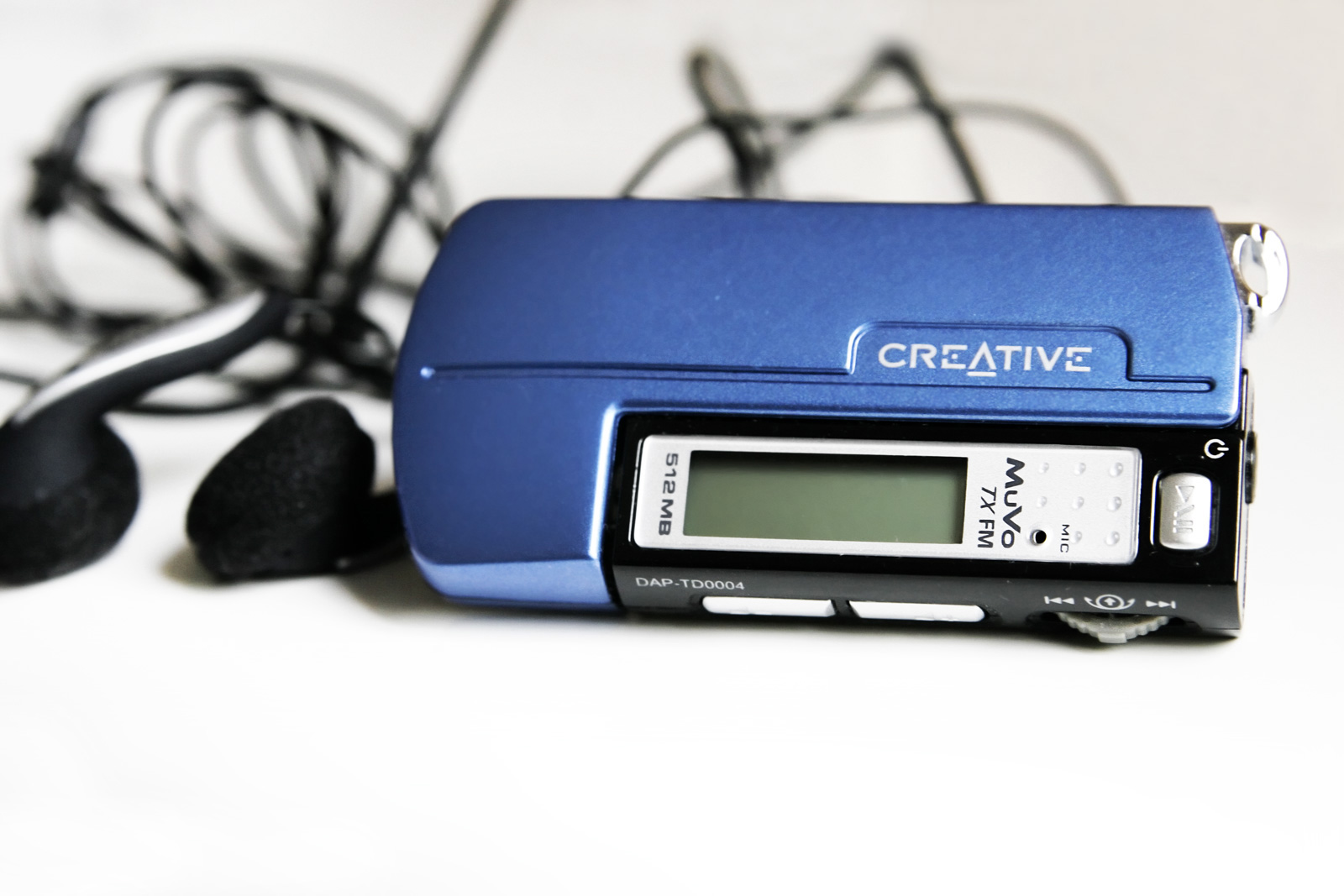|
Sixteenth HD1080
Sixteenth HD1080 (or HD1080/16) is a display resolution that is the same aspect ratio and one 16th the area of 1080 line high-definition TV resolution. HD1080 is 1920x1080 pixels, so dividing the resolution by 4 in each axis gives 480x270 pixels. This is a computationally convenient process, as HD1080 content can be scaled down simply by summing blocks of 16 pixels and dividing by 16 (arithmetic shift right 4 bits). HD720 is 1280x720 pixels, i.e. 2/3 the resolution of HD1080 in each axis. HD720 content thus needs to be scaled by a factor of 3/8 in each axis, producing 3x3 pixels for every 8x8 pixels in. This is not as easy as scaling HD1080 content. In practice, these displays are made with 272 rows of pixels where it is more convenient to manufacture pixels in multiples of 8x8. It also helps image compression and decompression, which is commonly done on 8x8 or 16x16 blocks of pixels. Applications Sixteenth HD1080 displays are generally intended for Portable Media Players, whe ... [...More Info...] [...Related Items...] OR: [Wikipedia] [Google] [Baidu] |
Display Resolution
The display resolution or display modes of a digital television, computer monitor or display device is the number of distinct pixels in each dimension that can be displayed. It can be an ambiguous term especially as the displayed resolution is controlled by different factors in cathode ray tube (CRT) displays, flat-panel displays (including liquid-crystal displays) and projection displays using fixed picture-element (pixel) arrays. It is usually quoted as ', with the units in pixels: for example, ' means the width is 1024 pixels and the height is 768 pixels. This example would normally be spoken as "ten twenty-four by seven sixty-eight" or "ten twenty-four by seven six eight". One use of the term ''display resolution'' applies to fixed-pixel-array displays such as plasma display panels (PDP), liquid-crystal displays (LCD), Digital Light Processing (DLP) projectors, OLED displays, and similar technologies, and is simply the physical number of columns and rows of pixels cre ... [...More Info...] [...Related Items...] OR: [Wikipedia] [Google] [Baidu] |
1080P
1080p (1920×1080 progressively displayed pixels; also known as Full HD or FHD, and BT.709) is a set of HDTV high-definition video modes characterized by 1,920 pixels displayed across the screen horizontally and 1,080 pixels down the screen vertically; the ''p'' stands for progressive scan, ''i.e.'' non-interlaced. The term usually assumes a widescreen aspect ratio of 16:9, implying a resolution of 2.1 megapixels. It is often marketed as Full HD or FHD, to contrast 1080p with 720p resolution screens. Although 1080p is sometimes informally referred to as 2K, these terms reflect two distinct technical standards, with differences including resolution and aspect ratio. 1080p video signals are supported by ATSC standards in the United States and DVB standards in Europe. Applications of the 1080p standard include television broadcasts, Blu-ray Discs, smartphones, Internet content such as YouTube videos and Netflix TV shows and movies, consumer-grade televisions and p ... [...More Info...] [...Related Items...] OR: [Wikipedia] [Google] [Baidu] |
720P
720p (1280×720 px; also called HD ready, standard HD or just HD) is a progressive HDTV signal format with 720 horizontal lines/1280 columns and an aspect ratio (AR) of 16:9, normally known as widescreen HDTV (1.78:1). All major HDTV broadcasting standards (such as SMPTE 292M) include a 720p format, which has a resolution of 1280×720; however, there are other formats, including HDV Playback and AVCHD for camcorders, that use 720p images with the standard HDTV resolution. The frame rate is standards-dependent, and for conventional broadcasting appears in 50 progressive frames per second in former PAL/SECAM countries (Europe, Australia, others), and 59.94 frames per second in former NTSC countries (North America, Japan, Brazil, others). The number ''720'' stands for the 720 horizontal scan lines of image display resolution (also known as 720 pixels of vertical resolution). The ''p'' stands for progressive scan, i.e. non-interlaced. When broadcast at 60 frames per second, 7 ... [...More Info...] [...Related Items...] OR: [Wikipedia] [Google] [Baidu] |
Portable Media Player
A portable media player (PMP) (also including the related digital audio player (DAP)) is a portable consumer electronics device capable of storing and playing digital media such as audio, images, and video files. The data is typically stored on a compact disc (CD), Digital Video Disc (DVD), Blu-ray Disc (BD), flash memory, microdrive, or hard drive; most earlier PMPs used physical media, but modern players mostly use flash memory. In contrast, analogue portable audio players play music from non-digital media that use analogue media, such as cassette tapes or vinyl records. Digital audio players (DAP) were often marketed as MP3 players even if they also supported other file formats and media types. The PMP term was introduced later for devices that had additional capabilities such as video playback. Generally speaking, they are portable, employing internal or replaceable batteries, equipped with a 3.5 mm headphone jack which can be used for headphones or to connect ... [...More Info...] [...Related Items...] OR: [Wikipedia] [Google] [Baidu] |
PlayStation Portable
The PlayStation Portable (PSP) is a handheld game console developed and marketed by Sony Computer Entertainment. It was first released in Japan on December 12, 2004, in North America on March 24, 2005, and in PAL regions on September 1, 2005, and is the first handheld installment in the PlayStation line of consoles. As a seventh generation console, the PSP competed with the Nintendo DS. Development of the PSP was announced during E3 2003, and the console was unveiled at a Sony press conference on May 11, 2004. The system was the most powerful portable console when it was introduced, and was the first real competitor of Nintendo's handheld consoles after many challengers such as Nokia's N-Gage had failed. The PSP's advanced graphics capabilities made it a popular mobile entertainment device, which could connect to the PlayStation 2 and PlayStation 3, any computer with a USB interface, other PSP systems, and the Internet. The PSP also had a vast array of multimedia featur ... [...More Info...] [...Related Items...] OR: [Wikipedia] [Google] [Baidu] |
Microsoft
Microsoft Corporation is an American multinational corporation, multinational technology company, technology corporation producing Software, computer software, consumer electronics, personal computers, and related services headquartered at the Microsoft Redmond campus located in Redmond, Washington, United States. Its best-known software products are the Microsoft Windows, Windows line of operating systems, the Microsoft Office Productivity software#Office suite, suite, and the Internet Explorer and Microsoft Edge, Edge web browsers. Its flagship hardware products are the Xbox video game consoles and the Microsoft Surface lineup of touchscreen personal computers. Microsoft ranked No. 21 in the 2020 Fortune 500 rankings of the largest United States corporations by total revenue; it was the world's List of the largest software companies, largest software maker by revenue as of 2019. It is one of the Big Tech, Big Five American information technology companies, alongside Alphabet ... [...More Info...] [...Related Items...] OR: [Wikipedia] [Google] [Baidu] |
Zune HD
The Zune HD is a portable media player in the Zune product family released on September 15, 2009, by Microsoft. It was a direct competitor with Apple's iPod Touch series of mobile devices. It was initially released in 16 and 32 GB capacities. A 64 GB version was released on April 9, 2010. It has a touchscreen interface for navigation and included Wi-Fi for synchronization, access to the Zune Marketplace and Web browsing. The Zune HD utilized the Nvidia Tegra APX 2600 chip, allowing it to play 720p video through the optional HDMI Zune dock on a high-definition television. Otherwise, content would be scaled down to 480×272 pixels on the player's OLED touchscreen. History Soon after Apple released the iPod Touch, Microsoft R&D department head, Robbie Bach, began work on a touchscreen Zune player to combat it. The department started immediately on reworking the Windows CE–based OS of the older Zune to suit the new multitouch PMP. Astro Studios was contracted to design the Zu ... [...More Info...] [...Related Items...] OR: [Wikipedia] [Google] [Baidu] |
OLED
An organic light-emitting diode (OLED or organic LED), also known as organic electroluminescent (organic EL) diode, is a light-emitting diode (LED) in which the emissive electroluminescent layer is a film of organic compound that emits light in response to an electric current. This organic layer is situated between two electrodes; typically, at least one of these electrodes is transparent. OLEDs are used to create digital displays in devices such as television screens, computer monitors, and portable systems such as smartphones and handheld game consoles. A major area of research is the development of white OLED devices for use in solid-state lighting applications. There are two main families of OLED: those based on small molecules and those employing polymers. Adding mobile ions to an OLED creates a light-emitting electrochemical cell (LEC) which has a slightly different mode of operation. An OLED display can be driven with a passive-matrix (PMOLED) or active-matri ... [...More Info...] [...Related Items...] OR: [Wikipedia] [Google] [Baidu] |




